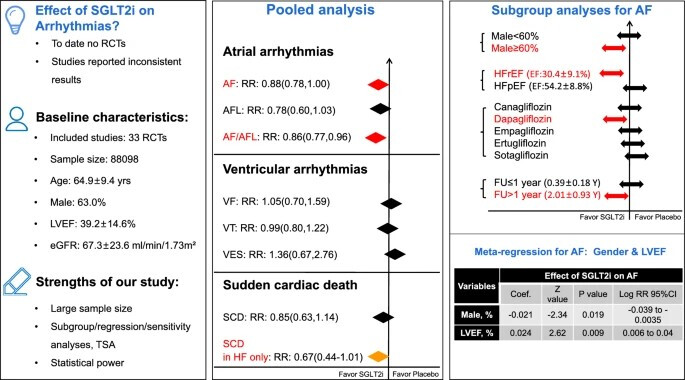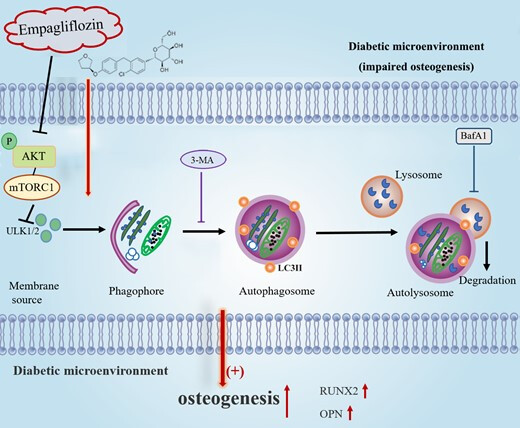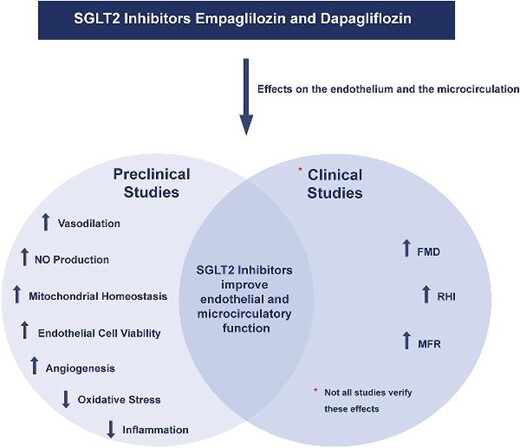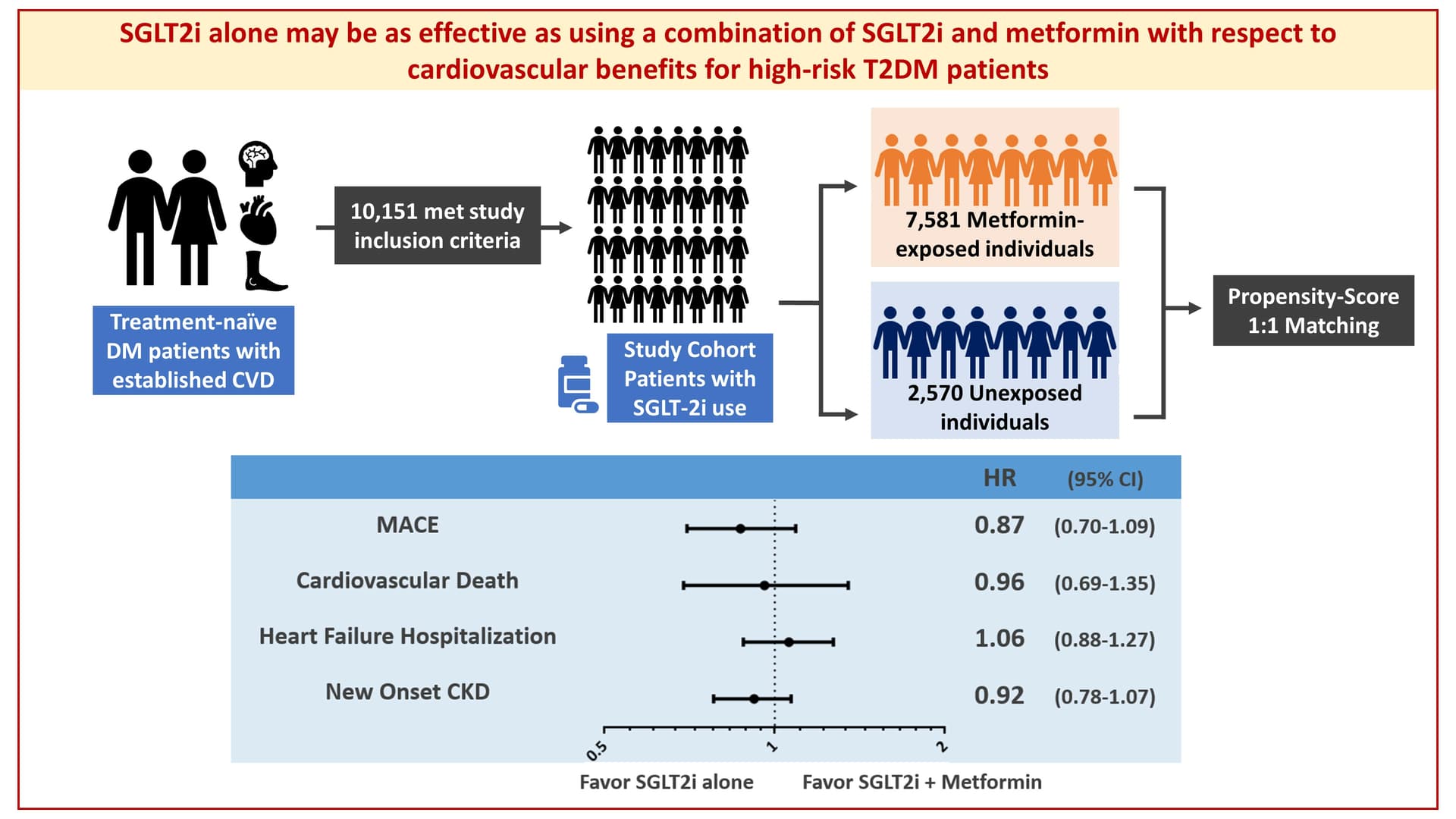Your daily dose of recent good quality SGLTi papers:
Effect of SGLT-2 inhibitors on arrhythmia events: insight from an updated secondary analysis of > 80,000 patients (the SGLT2i—Arrhythmias and Sudden Cardiac Death) 2024
SGLT2i lowers the risks of AF and AF/AFL, and this favorable effect appeared to be particularly pronounced in patients with HFrEF, male gender, dapagliflozin, and longer follow-up (> 1 year). SGLT2i lowers the risk of SCD only in heart failure patients.

Effects of dapagliflozin on cardiac function and short-term prognosis of patients with both acute myocardial infarction and type 2 diabetes mellitus 2024
Dapagliflozin can substantially improve the blood glucose and cardiac function of patients with both AMI and T2DM. It can lower the rate of readmission for heart failure, and provide various cardiovascular benefits besides hypoglycemic effect.
Empagliflozin ameliorates the impaired osteogenic differentiation ability of adipose-derived stem cells in diabetic osteoporosis by activating autophagy 2024
However, empagliflozin enhanced autophagy flux by promoting the formation of autophagosomes and acidification of autophagic lysosomes, resulting in an increase in LC3-II expression and a decrease in SQSTM1 expression. Furthermore, empagliflozin contributed to the reversal of osteogenesis inhibition in DOP-ASCs induced by a diabetic microenvironment.

Vascular Endothelial Growth Factors and Risk of Cardio-renal Events: Results from the CREDENCE trial 2024
People with T2D and DKD with elevated levels of PlGF, sFLT-1, and PlGF/sFLT-1 ratio were at a higher risk for cardiorenal events. Canagliflozin did not meaningfully decrease concentrations of PlGF, sFLT-1, and VEGF-A.
GRP78 contributes to the beneficial effects of SGLT2 inhibitor on proximal tubular cells in DKD 2024
Beneficial effects of SGLT2 inhibitors on kidney function are well-known; however, their molecular mechanisms are not fully understood. We focused on 78 kDa glucose-regulated protein (GRP78) and its interaction with SGLT2 and Integrin ß1 beyond the chaperone property of GRP78. In STZinduced diabetic mouse kidneys, GRP78, SGLT2, and Integrin ß1 increased in the plasma membrane fraction, while they were suppressed by canagliflozin. The altered subcellular localization of GRP78/Integrin ß1 in STZ mice promoted epithelial mesenchymal transition (EMT) and fibrosis, which were mitigated by canagliflozin. High glucose conditions reduced intracellular GRP78, increased its secretion, and caused EMT-like changes in cultured HK2 cells, which were again inhibited by canagliflozin. Urinary GRP78 increased in STZ mice, and in vitro experiments with recombinant GRP78 suggested that inflammation spread to surrounding tubular cells and canagliflozin reversed this effect. Under normal glucose culture, canagliflozin maintained SERCA activity, promoted endoplasmic reticulum (ER) robustness, reduced ER stress response impairment, and protected proximal tubular cells. In conclusion, canagliflozin restored subcellular localization of GRP78, SGLT2 and Integrin ß1 and inhibited EMT and fibrosis in DKD. In non-diabetic CKD, canagliflozin promoted ER robustness by maintaining SERCA activity and preventing ER stress response failure, and contribute to tubular protection.



